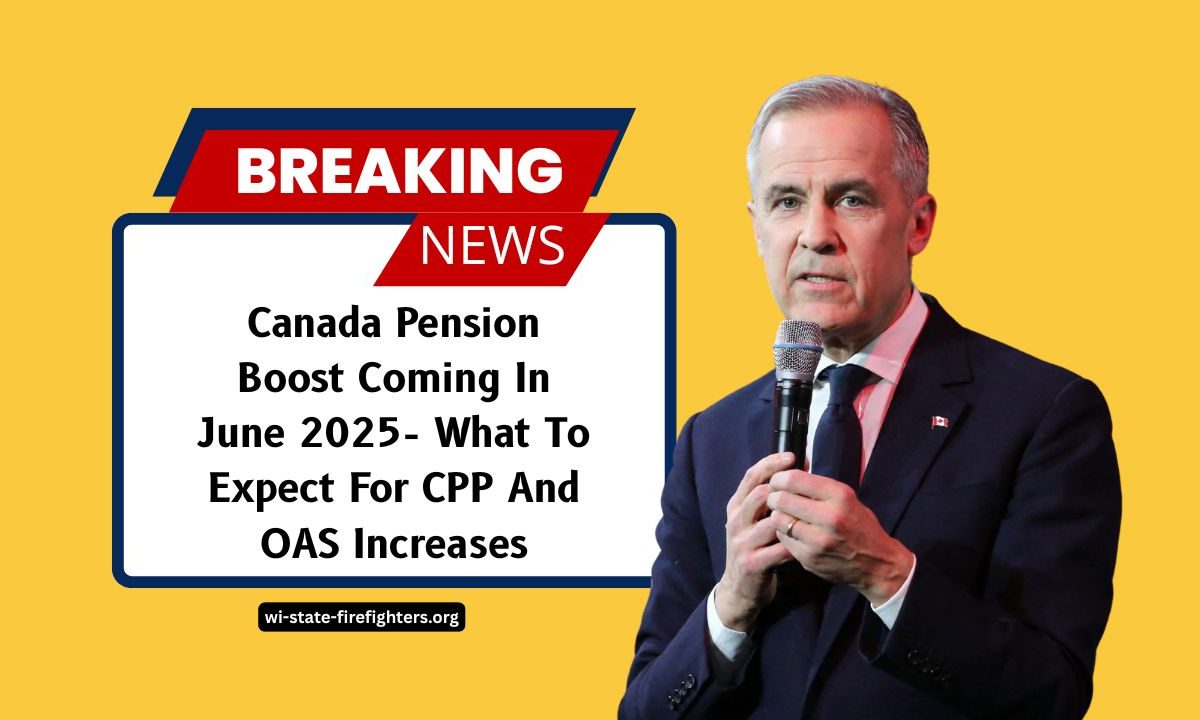As Canadian seniors navigate the challenges of rising living costs, the federal government has announced significant enhancements to the Canada Pension Plan (CPP) and Old Age Security (OAS) programs, effective June 2025.
These adjustments aim to provide increased financial support to retirees, ensuring their purchasing power keeps pace with inflation.
Canada Pension Plan (CPP) Enhancements
The Canada Pension Plan is a contributory retirement program designed to replace a portion of pre-retirement earnings. In 2025, the CPP has undergone notable changes:
- Maximum Monthly Benefit: The maximum monthly Canada Pension Plan retirement pension has increased to $1,433.00, up from $1,364.60 in 2024.
- Average Monthly Benefit: New beneficiaries are receiving an average of $816.52 per month.
- Contribution Rates:
- Employees and Employers: Each contributes 5.95% on earnings up to the Year’s Maximum Pensionable Earnings (YMPE) of $71,300.
- Self-Employed Individuals: Contribute 11.90% on earnings up to the YMPE.
- Additional Contributions (CPP2): Introduced for earnings between $71,300 and $81,200, with a contribution rate of 4.00% for employees and employers, and 8.00% for self-employed individuals.
- Enhancement Impact: The Canada Pension Plan enhancement, initiated in 2019, aims to increase the income replacement rate from 25% to 33.33%, providing greater financial security for retirees.
Old Age Security (OAS) Adjustments
The Old Age Security program offers monthly payments to seniors aged 65 and older. Unlike CPP, OAS is funded through general tax revenues and does not require prior contributions.
- Payment Amounts (April–June 2025):
- Ages 65–74: Maximum monthly payment of $727.67.
- Ages 75 and over: Maximum monthly payment of $800.44, reflecting a 10% increase introduced in July 2022.
- Upcoming Increase: Based on the Consumer Price Index (CPI), a 1.0% increase is anticipated for the July–September 2025 quarter.
- Eligibility Criteria:
- Age: Must be 65 years or older.
- Residency: Must have resided in Canada for at least 10 years after age 18.
- Clawback Threshold: For 2025, individuals with net annual income exceeding $90,997 are subject to a 15% recovery tax on the excess amount.
Additional Support: Guaranteed Income Supplement (GIS)
The Guaranteed Income Supplement provides additional financial assistance to low-income seniors receiving OAS.
- Maximum Monthly GIS Payment: Up to $1,065.47 for single, low-income seniors.
- Eligibility:
- Must be receiving OAS.
- Annual income must be below a specified threshold, which varies based on marital status and other factors.
CPP and OAS Adjustments for 2025
| Aspect | Details |
|---|---|
| CPP Maximum Monthly Benefit | $1,433.00 |
| CPP Average Monthly Benefit | $816.52 |
| CPP Contribution Rate | 5.95% (employees and employers); 11.90% (self-employed) up to $71,300 |
| CPP2 Contribution Rate | 4.00% (employees and employers); 8.00% (self-employed) on earnings between $71,300 and $81,200 |
| OAS Monthly Payment (65–74) | $727.67 |
| OAS Monthly Payment (75+) | $800.44 |
| GIS Maximum Monthly Payment | $1,065.47 |
| OAS Clawback Threshold | $90,997 |
| Next OAS Increase | 1.0% anticipated for July–September 2025 |
The 2025 enhancements to Canada’s Canada Pension Plan and OAS programs reflect the government’s commitment to supporting seniors amidst rising living costs.
By understanding these changes and planning accordingly, retirees can better secure their financial future.
FAQs
How can I maximize my CPP benefits?
Delaying Canada Pension Plan benefits beyond age 65 can increase your monthly payments by up to 42%. Each month you delay, your pension increases by approximately 0.7%, up to age 70.
Am I automatically enrolled in OAS?
Many Canadians are automatically enrolled in OAS. However, if you haven’t received a notification from Service Canada, it’s advisable to apply six months before your 65th birthday.
What is the difference between CPP and OAS?
CPP is a contributory program based on your earnings and contributions during your working years. OAS is a non-contributory program based on your age and residency in Canada.

